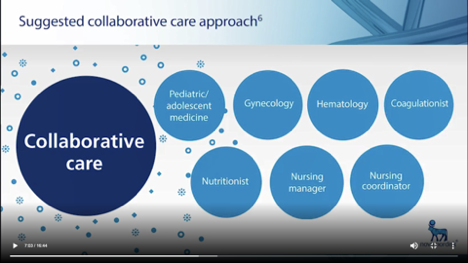A few words about
Bleeding Disorders
Bleeding Disorders
What is Hemophilia?
Hemophilia is a genetic bleeding disorder that prevents the blood from clotting normally. The main symptom is uncontrolled, often spontaneous bleeding. Internal bleeding into the joints can result in pain, swelling and, if left untreated, can cause permanent damage.
Hemophilia results from the deficiency of one more protein known as blood clotting factors. There are 13 clotting proteins in the body, all of which contribute to the formation of a clot. The two main forms are hemophilia A (factor VIII deficiency) and hemophilia B (factor IX deficiency). Hemophilia occurs in 1 in 5,000 live male births, of these 80% are hemophilia A and 20% are hemophilia B. The worldwide incidence of hemophilia is estimated at more than 400,000 people. Approximately 70% of people around the world do not have access to treatment.
Currently, there is no cure for hemophilia. While treatment exists, it is costly and may require lifelong infusion of replacement clotting factor that is manufactured either from human plasma or using recombinant technology. Hemophilia occurs predominately in males. Women are carriers of the defective gene and may experience mild symptoms. In about one-third of cases there is no known family history of hemophilia. Instead, the disorder results from a spontaneous genetic mutation.
von Willebrand disease is another genetic bleeding disorder that prevents the blood from clotting normally. It is caused by a deficient or defective blood protein known as von Willebrand factor. It occurs with equal frequency in men and women. It is estimated to affect more than two million people in the U.S. Of the three main types, type I (the mildest form of the disease) accounts for 70% of cases. Symptoms include frequent nosebleeds, a tendency to bruise easily, and excessive bleeding following surgery. In women, the disease may also cause heavy, prolonged bleeding during menstruation and excessive bleeding following childbirth. VWD is often undiagnosed or incorrectly attributed to a gynecologic condition.
- Symptoms of Bleeding Disorders in Women
Symptoms:
You may have a bleeding disorder if you have one or more of the following symptoms: https://www.hemophilia.org/Community-Resources/Women-with-Bleeding-Disorders/Women-also-Bleed
I have heavy menstrual periods
- Bleeding for more than 7 days, from the time it began until it stopped
- Flooding or gushing of blood, limiting daily activities such as housework, exercise or social activities
- Passing clots that are bigger than a quarter
- Changing tampon and/or pad every 2 hours or less on heaviest day I have been told I am “low in iron” or I was treated for anemia
I have bleeding symptoms and someone in my family has a bleeding disorder, such as von Willebrand disease, or a clotting factor deficiency, such as hemophilia
I have experienced heavy bleeding from dental surgery, other surgery, or childbirth and/or have other additional bleeding symptoms such as:
- frequent prolonged nose bleeds (longer than 10 minutes) or
- prolonged bleeding from cuts (longer than 5 minutes) or
- easy bruising (weekly, raised and larger than a quarter)
Signs and Symptoms…..

- When to Consult a Doctor:
- Questions to ask:
- Tests to request:
- When to move on:
Get diagnosed as a bleeder, not a carrier (if you have a child that has disease, get tested
Often fibroids, thyroid, endometriosis diagnoses rather than hemophilia
It’s more than heavy bleeding, it’s bruising easily, takes longer to heal, etc. (list symptoms of
bleeders)
Seek help elsewhere: Hematologist, someone in the bleeding disorder community to help
lead you in the right direction
- Treatments:

